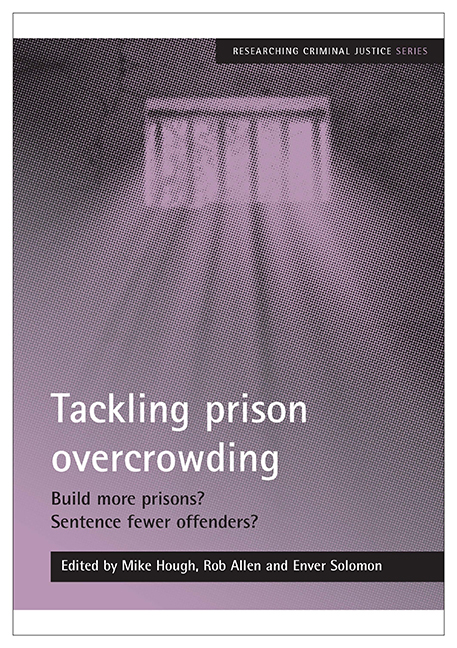Book contents
- Frontmatter
- Contents
- List of figures and tables
- Acknowledgements
- Foreword
- Notes on contributors
- 1 Introduction
- 2 The prisoners’ dilemma in England and Wales
- 3 Building on sand: why expanding the prison estate is not the way to ‘secure the future’
- 4 Towards more consistent and predictable sentencing in England and Wales
- 5 ‘Titan’ prisons: do size, efficiency and legitimacy matter?
- 6 Private punishment? An examination of the expansion, development and employment relations of private prisons
- 7 Reducing the use of custody as a sanction: a review of recent international experiences
- 8 Where now?
- 9 Endnote: latest developments in penal policy
7 - Reducing the use of custody as a sanction: a review of recent international experiences
Published online by Cambridge University Press: 25 March 2023
- Frontmatter
- Contents
- List of figures and tables
- Acknowledgements
- Foreword
- Notes on contributors
- 1 Introduction
- 2 The prisoners’ dilemma in England and Wales
- 3 Building on sand: why expanding the prison estate is not the way to ‘secure the future’
- 4 Towards more consistent and predictable sentencing in England and Wales
- 5 ‘Titan’ prisons: do size, efficiency and legitimacy matter?
- 6 Private punishment? An examination of the expansion, development and employment relations of private prisons
- 7 Reducing the use of custody as a sanction: a review of recent international experiences
- 8 Where now?
- 9 Endnote: latest developments in penal policy
Summary
How might a legislature reduce the use of custody as a sanction? Constraining rising (or reducing stable) prison populations remains a challenge confronting most western nations. It is now more than 20 years since the United Nations Standard Rules for Non-Custodial Measures1 (the so-called ‘Tokyo Rules’) were adopted, the principal goal of which was to reduce the traditional reliance on imprisonment as a legal punishment. Throughout the 1990s, however, prison populations rose in many common law jurisdictions, particularly England and Wales and the US. The prison population in England and Wales grew by over 60% during the decade 1995–2005 (Ministry of Justice, 2007, p. 4). Similar correctional trends may be found elsewhere: A Home Office survey notes that prison populations rose in almost three-quarters of the countries included since the previous survey five years earlier (Walmsley, 2007). These trends are particularly disconcerting when one considers that crime rates, and hence the volume of offenders appearing before the courts, were stable or declining during much of this period (see Kershaw et al, 2008).
Purpose of chapter
In its recently published report, the Sentencing Commission Working Group (2008b) has concluded that a US-style sentencing commission, one which takes prison capacity into account when devising and revising its guidelines, is inappropriate for England and Wales. Others have taken a different view. Hough and Jacobson (2008) for example advocated creation of such a sentencing commission to help constrain the rising prison population in England and Wales. A sentencing commission is only one way of achieving this goal, however.
This chapter reviews other strategies which have been implemented or proposed to control or reduce the size of the prison population. It is worth noting that although many temporary and permanent sentencing commissions as well as ad hoc commissions of inquiry have been created across the common law world, none of these has conducted a systematic, evidence-based review of the effectiveness of different approaches to reducing the size of the prison population. This chapter represents a small step towards identifying the components that make up a successful decarceration strategy. As will be seen, a diversity of strategies has been adopted in recent years. I comment on the advantages – and some disadvantages – of different strategies. The discussion is restricted to remedial efforts that exist within the criminal justice system.
- Type
- Chapter
- Information
- Tackling Prison OvercrowdingBuild More Prisons? Sentence Fewer Offenders?, pp. 103 - 122Publisher: Bristol University PressPrint publication year: 2008



